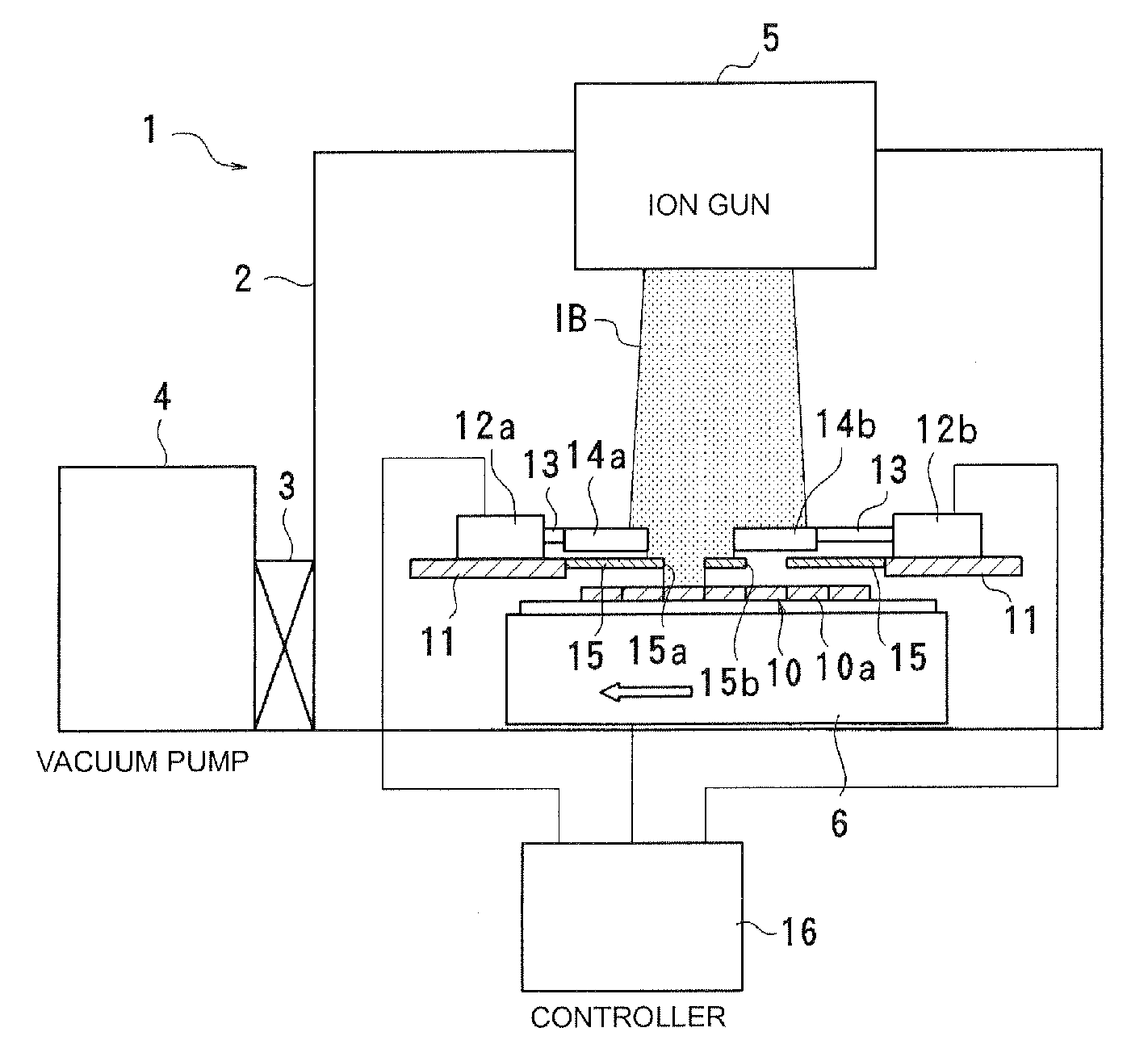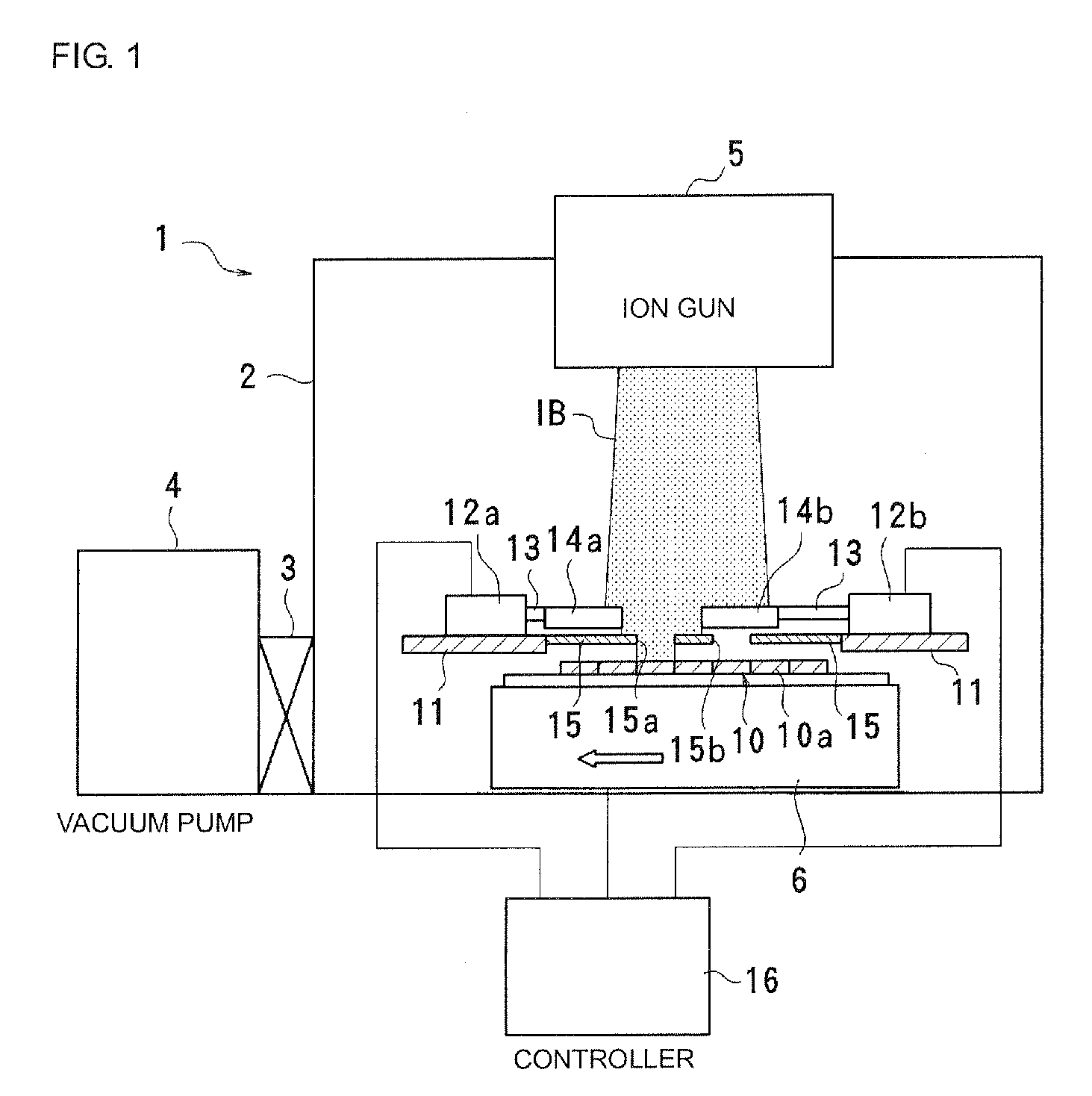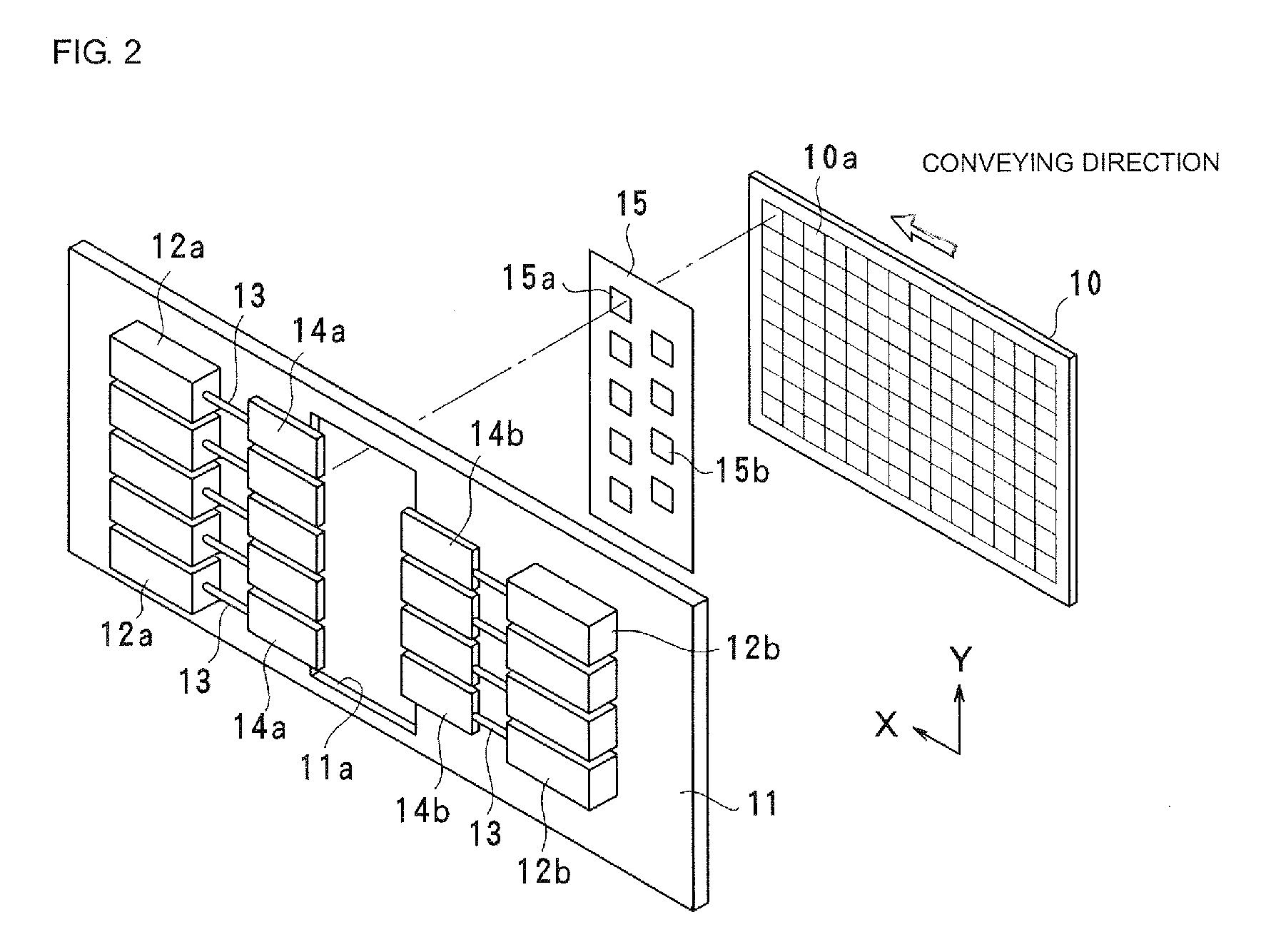Frequency adjusting apparatus
a frequency adjustment and frequency technology, applied in the field of frequency adjustment apparatus, can solve the problems of insufficient irradiation of the edge of the irradiation target area, inability to selectively apply the ion beam only to a desired element, and inability to apply the ion beam to regions, etc., to achieve accurate frequency adjustment
- Summary
- Abstract
- Description
- Claims
- Application Information
AI Technical Summary
Benefits of technology
Problems solved by technology
Method used
Image
Examples
first embodiment
[0040]FIG. 1 to FIG. 4 illustrate an example of a frequency adjusting apparatus according to an embodiment of the present invention. A frequency adjusting apparatus 1 includes an enclosed processing chamber 2 and a vacuum pump 4 connected to one side of the processing chamber 2, with an opening / closing door 3 interposed between the processing chamber 2 and the vacuum pump 4. By driving the vacuum pump 4, the degree of vacuum in the processing chamber 2 can be maintained at a predetermined level.
[0041]An ion gun 5 for etching is disposed at the ceiling of the processing chamber 2. As illustrated in FIG. 1, the ion gun 5 is capable of emitting an ion beam IB downward at a substantially constant intensity per unit area within a predetermined region.
[0042]A movable stage (i.e., conveying unit) 6 is disposed at the bottom of the processing chamber 2. A wafer 10, such as a piezoelectric substrate, is positioned and held on the movable stage 6. As illustrated in FIG. 2 and FIG. 3B, areas 1...
second embodiment
[0060]FIG. 5 illustrates a frequency adjusting apparatus according to a second embodiment of the present invention. In the present embodiment, one area 10a of the wafer 10 includes an array of four by four elements. The areas 10a are displaced, on a row-by-row basis, by a distance of half a pitch corresponding to two elements in the conveying direction. That is, the areas 10a in the even-numbered rows are displaced in the conveying direction by a distance of half a pitch from the areas 10a in the odd-numbered rows.
[0061]The amount of displacement d1, however, is not limited to a distance of half a pitch that corresponds to two elements. In the pattern mask 15, a column of the mask holes 15a and a column of the mask holes 15b are spaced from each other in the conveying direction of the wafer 10 by a distance d2 smaller than one pitch P. The distance d2, which is equal to the amount of displacement d1 in the present embodiment, may be set to a value determined by the following equatio...
third embodiment
[0064]FIG. 6 illustrates a frequency adjusting apparatus according to a third embodiment of the present invention. In the present embodiment, each of a plurality of pattern masks 20 and 21 is used to process areas only in specific rows. Thus, frequency adjustment for areas in each column perpendicular to the wafer conveying direction is performed in multiple steps. The two pattern masks 20 and 21 are spaced from each other by a predetermined distance D in the wafer conveying direction. It is preferable that the distance D be an integral multiple of the area pitch P.
[0065]The pattern mask 20 is provided with mask holes 20a1, 20a3, 20a5, 20a7, and 20a9 arranged in a staggered manner. The mask holes 20a1, 20a3, 20a5, 20a7, and 20a9 correspond to areas in respective odd-numbered rows (i.e., the first, third, fifth, seventh, and ninth rows). Specifically, the mask holes 20a1, 20a5, and 20a9 in the first, fifth, and ninth rows, respectively, are formed in the same column. This column is s...
PUM
| Property | Measurement | Unit |
|---|---|---|
| frequency | aaaaa | aaaaa |
| area | aaaaa | aaaaa |
| distance | aaaaa | aaaaa |
Abstract
Description
Claims
Application Information
 Login to View More
Login to View More - R&D
- Intellectual Property
- Life Sciences
- Materials
- Tech Scout
- Unparalleled Data Quality
- Higher Quality Content
- 60% Fewer Hallucinations
Browse by: Latest US Patents, China's latest patents, Technical Efficacy Thesaurus, Application Domain, Technology Topic, Popular Technical Reports.
© 2025 PatSnap. All rights reserved.Legal|Privacy policy|Modern Slavery Act Transparency Statement|Sitemap|About US| Contact US: help@patsnap.com



